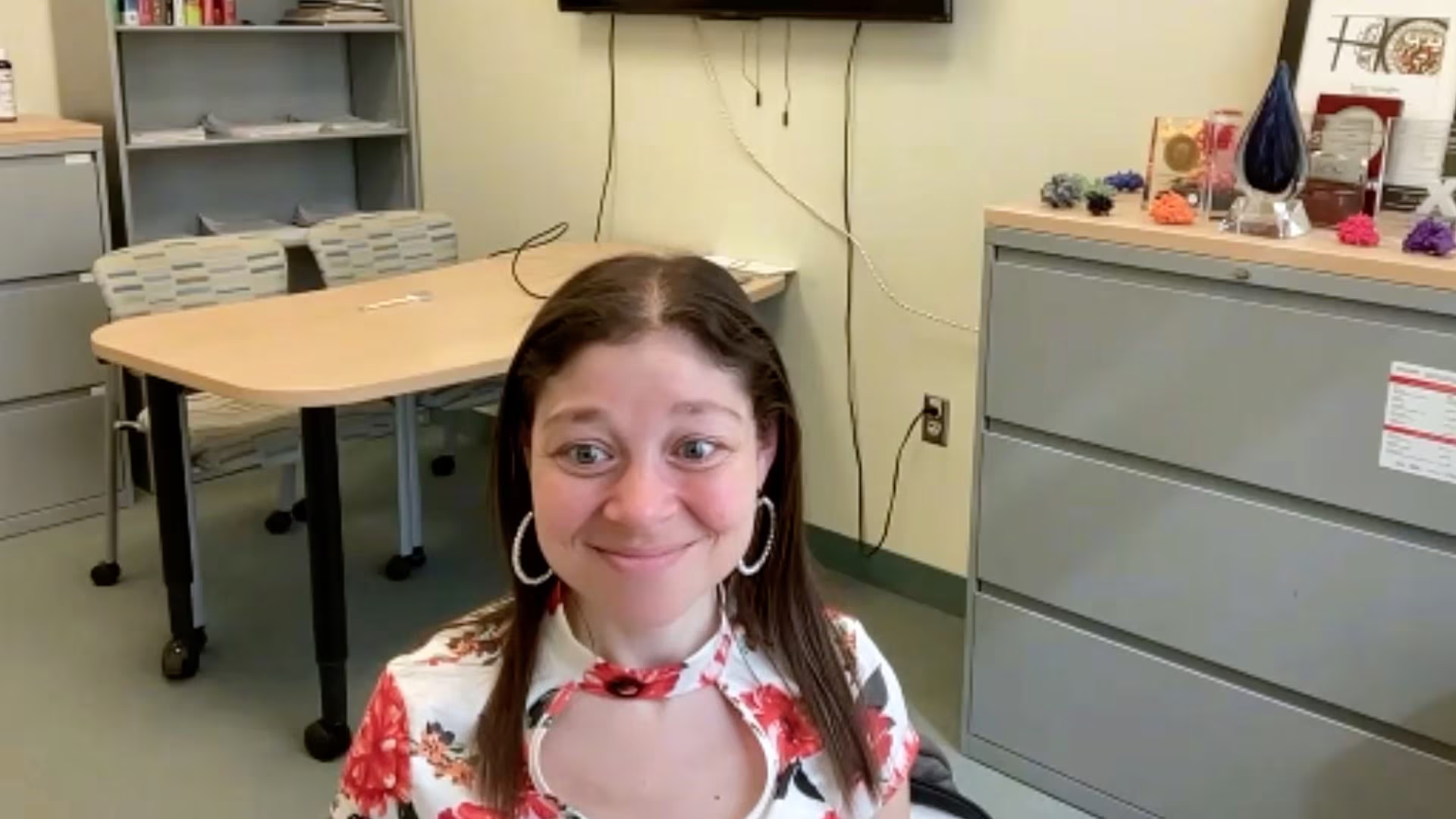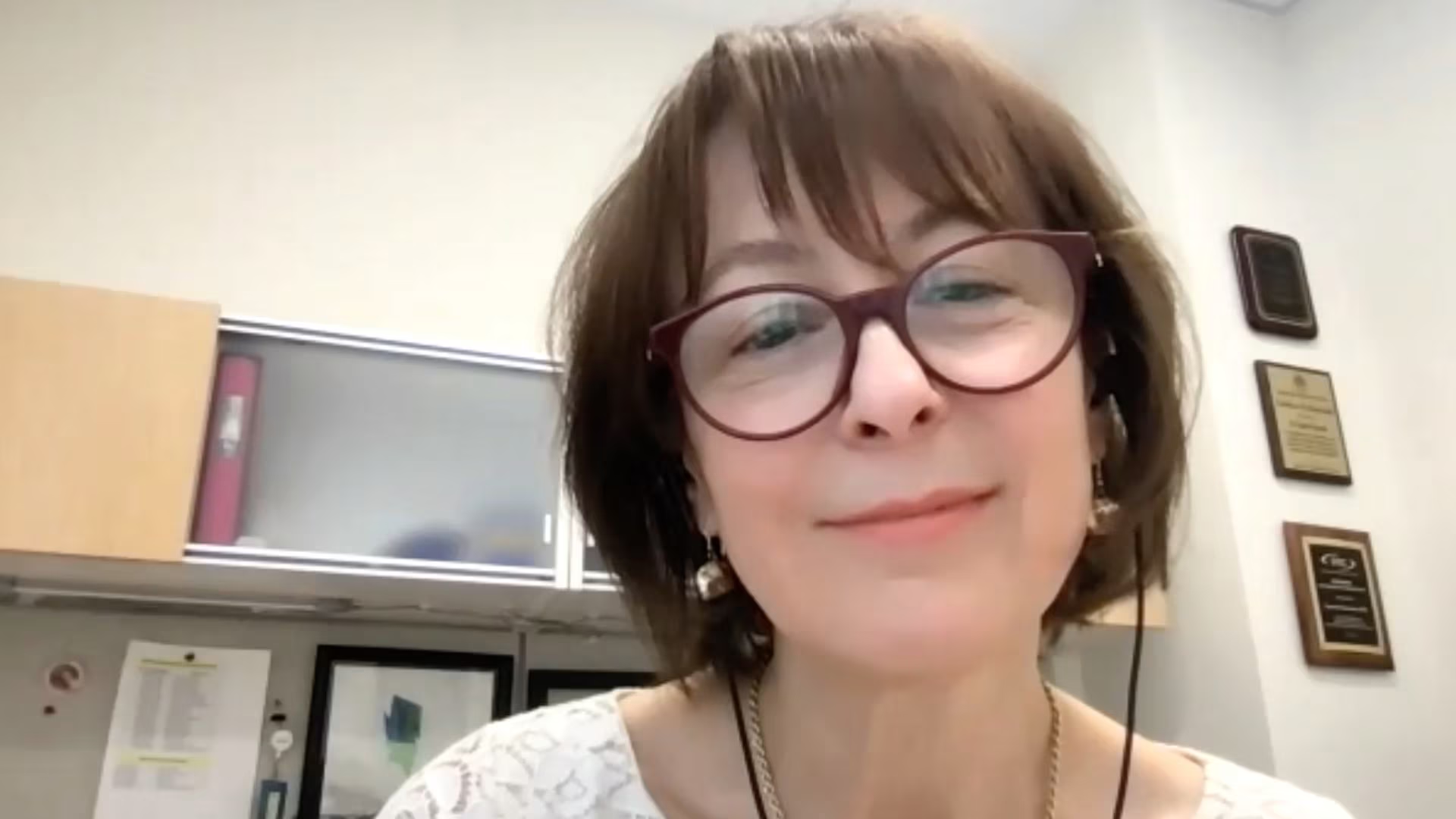Radiation-induced DNA damage response and tumour immunogenicity: Sandra Demaria, AACR 2023 (Part 1)
A defective DNA damage response in cancer cells can lead to genomic instability and impact the immunogenicity of tumours, improving the efficacy of immunotherapy treatment approaches. We were delighted to talk with Professor Sandra Demaria (Weill Cornell Medicine, New York, NY, USA) around the radiation-induced DNA damage response, its association with cancer and how this modulates immunogenicity of tumours.
‘The radiation-induced DNA damage response modulates cancer cell immunogenicity and response to immunotherapy‘ was presented at AACR 2023, April 14-19, 2023.
Questions
- Could you give us a brief overview of the radiation-induced DNA damage response and its association with cancer? (0:13)
- What do we already know about the link between DNA damage and immunogenicity of tumours? (2:28)
Disclosures: Sandra Demaria discloses consulting for Johnson & Johnson, Genentech, and Astra Zeneca; receiving grant/ research support from Boheringer-Ingelheim, Lytix Biopharma, and Nanobiotix (all to her Institution); serving on advisory boards for Lytix Biopharma; and receiving honoraria/honorarium from Lytix Biopharma, Johnson & Johnson, Genentech, and Astra Zeneca.
Support: Interview and filming supported by Touch Medical Media Ltd. Interview conducted by Victoria Jones.
Filmed in coverage of the 2023 AACR Annual Meeting.
Click here for more content on immuno-oncology.
Transcript
Could you give us a brief overview of the radiation-induced DNA damage response and its association with cancer? (0:13)
Ionizing radiation really causes DNA damage by directly causing DNA damage in breaks and also by leading to the generation of the reactive oxygen species, which can cause additional types of DNA damage. So, DNA damage is repaired by two main processes, which are known as homologous recombination and non-homologous end joining. Homologous recombination is an error-free process, but it is only active during the S and G2 phase of the cell cycle, while non-homologous end joining is often the mechanism that is used by cells to repair the DNA because it’s active through the cell cycle and is also fast, but it tends to be a little less precise. So, in cancer, obviously, there are defects to some degree of repair mechanism and that is why radiation can be effective therapeutically, because it can cause damage that the cancer cells have more trouble repairing, while normal tissue that might be in the field (despite the attempts to be very precise in targeting the tumour) has a better repair capacity than the cancer cells. Now the effects on DNA damage as connected to cancer, accumulation of mutation and genomic instability, which are really the sort of key mechanisms that lead to a cell becoming neoplastic, because these defects allows cells then to enter the cell cycle without completely repairing the DNA, or making a mistake during DNA repair and leading to actual accumulation of more mutations.
What do we already know about the link between DNA damage and immunogenicity of tumours? (2:28)
That’s actually a very important point and a key area where cancer immunology connects to infectious diseases and autoimmunity because we kind of know that when you have a nucleic acid, particularly DNA in the cytosol of the cells, it is in the wrong compartment because that’s where usually viruses when they infect cells, the viral genome is in the cytosol first before maybe integrating in the nuclear of the cell, depending on the type of virus and other pathogenic bacteria as well. We also know that diseases such as lupus are connected to dysregulation in the nucleic acid handling by the cells; cells have a lot of sensors in different compartments, in the endocytic compartment, and in the cytosolic compartment to detect nucleic acid that are in the wrong place. A major one is known as cGAS and it can detect cellular DNA and activate the production of type 1 interferon, which is the main cytokine that triggers a lot of responses and activates the immune response. It recruits antigen presenting cells, it activates them and jump-starts a program of production of other factors downstream of type 1 interferon that are key in protecting the cell by signalling to the immune system that the cells that contain the virus have to be eliminated. So it’s, you know, a signal to the immune system that something is wrong with the cell and so in cancer cells, this can occur as well. When you have DNA repair, when you have DNA in the cytosol, which occurs when cells are really genomically unstable, they tend to mishandle the DNA, DNA is not completely repaired and one thing that they do is they generate what are known as micro nuclei, which is basically pieces of chromosomes that are not sorted properly during cell division. They end up in the cytosol where their attenuated nuclear membrane can expose the DNA and the cells interpret that as being actually a virus or a pathogen that has entered the cells and activates all these defence programs.
Subtitles and transcript are autogenerated.






